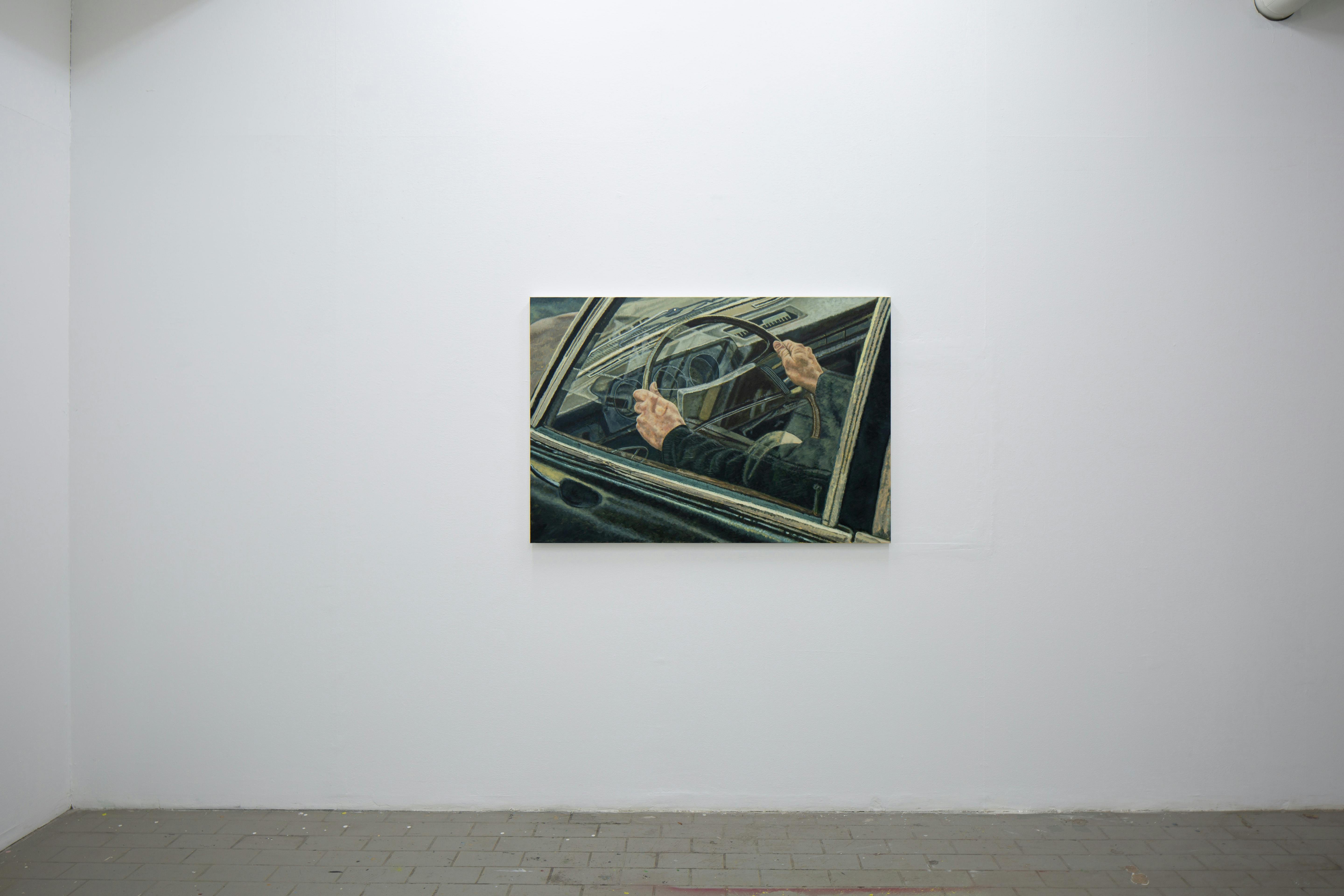
In an interview with artist Owen Land and writer P. Adams Sitney, Land wrote, ‘in painting you start with a blank canvas, you start with nothing and you create your image, particle by particle’. Alexander Skats assembles his particles by staining his canvases with coloured backdrops, a technique borrowed from the Old Masters, which eventually haloes the unfolding drama on top. Land later continued that ‘in film, usually, you just open your lens and you have a vast quantity of objects which become parts of your image.’ According to him, ’painting and film are opposite processes.’ But Skats plucks from cult French filmmaker Robert Bresson, pausing on moments of gripping tension, transforming these collected stills into observations which fuse paint and film into one.
The exhibitions title, ‘Avalanche’ is taken from a quote by Bresson when describing his film ‘L’Argent’ – the still of which features in ‘Father and Son’. Skats likens the avalanche to the way he paints, bringing a plethora of disparate moments together in an unfolding barrage. He jostles from screen to canvas, usurping junctures from the films into compositions of Bresson’s protagonists but isolated to their hands alone. Hands are a subject many notable painters choose to paint, and Skats particularly drawn to how , and paint them in various contorted poses. Skats is also influenced by artists who similarly paint from film, notably , who draws heavily from cinematography by ‘the way you start to edit imagery, and especially the distance imposed by the lens — film gave me an opportunity to translate that into painting.’
For Skats, sometimes the crop is as important as the details inside. In 'Car Interior’ he omits the seated passenger entirely, drawing our attention solely to the dashboard. Skats is compelled by the unfinished studies of , learning from them the power of removal in further obfuscating the reading of a scene. The act of repetition, too, is a mainstay in how he displaces source imagery from its context, as he likens four studies of ‘Jo’ to his paintings ‘Keys I’ and ‘Keys II’.
Skats underlines the act of seeing, attending to shadow with a dark intensity associated with the paintings of or , in which the earlier layers of paint directly affect the foreground on top. Although familiar in their filmic content, his paintings jostle the graphic accuracy of a painting, but the softness and cheek of a . ‘Avalanche’ is an exhibition which forges these bygone films into a brighter, contemporary context, one that denies insight as much as it provides clues to the character whose car and hands they belong to.
References
1
2
3
4
5
6
7
8
9
10
Alexander Skats, Avalanche
April 25 – May 25, 2024
























